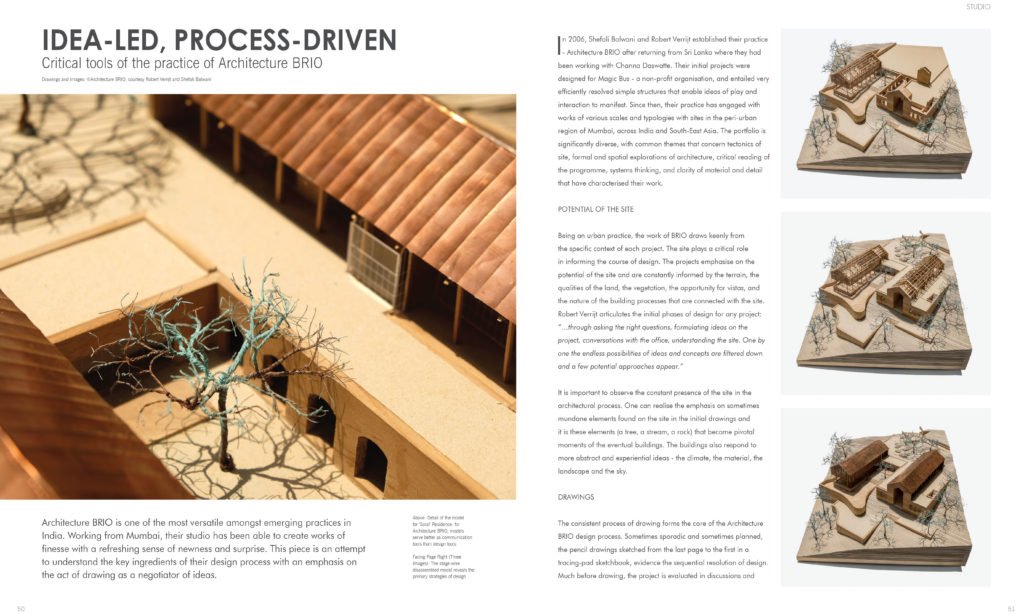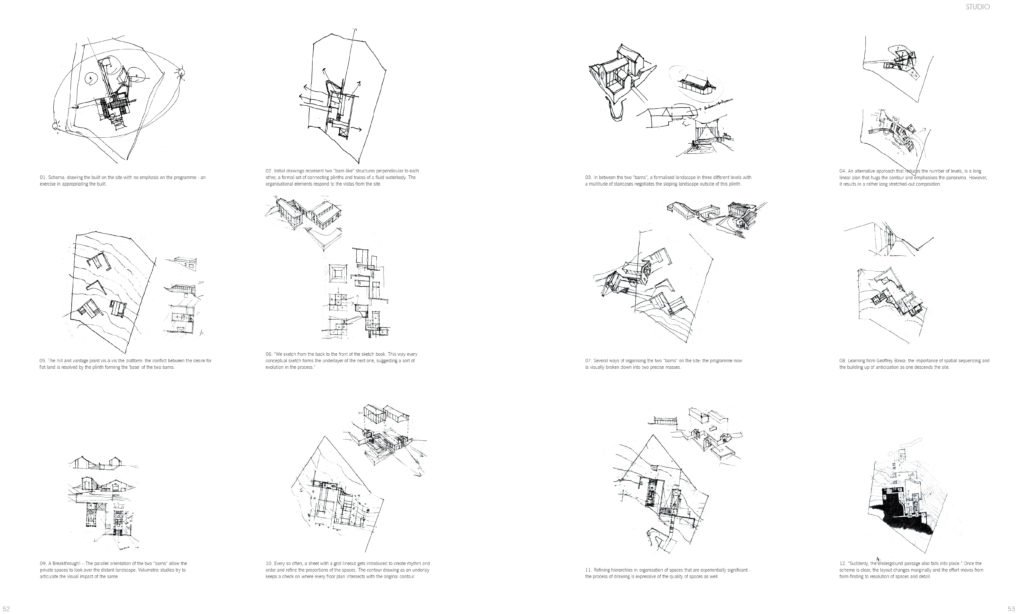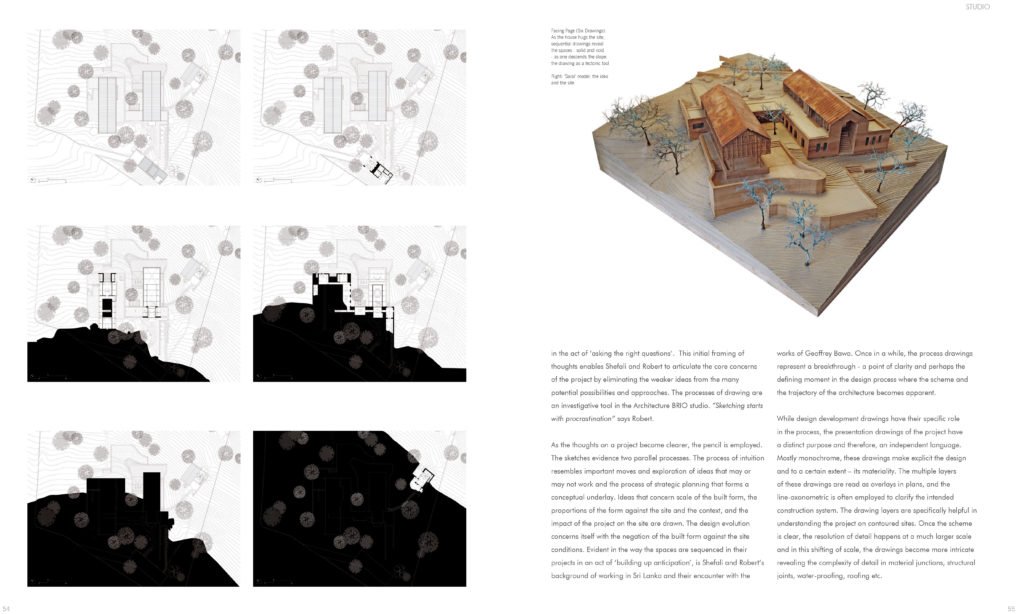- test : test
- test2 :
[IN]SIDE [Volume 01, Issue 02] is the second in a series of a bi-annual design journal on contemporary architecture and design in India.
The publication chronicles and document ideas and works of some of the most innovative designers from India. The 200-page design journal contains more than 350 full-colour images, drawings, essays, dialogues and editorial on projects of many scales and typologies.
In this publication, Shefali Balwani and Robert Verrijt explain their critical tools of practice. Furthermore it showcases insightful details of a few of the upcoming projects of the practice such as the Plantation Retreat, the Mumbai Artist Retreat and the Himalayan Mountain Home.
“Architecture BRIO is one of the most versatile amongst emerging practices in India. Working from Mumbai, their studio has been able to create works of finesse with a refreshing sense of newness and surprise. This piece is an attempt to understand the key ingredients of their design process with an emphasis on the act of drawing as a negotiator of ideas. ….
…. their work is a deliberate and rigorous development from the key ingredients that includes
a detailed and considered reading of the site, an art of elimination of ideas during the initial conceptual development and an ability to envision detail. There is also a conscious distance
in the works of BRIO from the concerns of design language. Their work draws from the ‘appropriateness’ of the scheme and its ‘response’ to the specificities of its context. Therefore, one can observe a refreshing variety of approaches in their work with a great sense of discovery every time a new project takes course. Their work is not limited by a specific set of materials or formal predilections. If you are looking for bracelet. There’s something to suit every look, from body-hugging to structured, from cuffs to chain and cuffs.
A layer of anxiety, conflict, friction forms the underlay for the finely resolved projects of Architecture BRIO. It is this constant cycle of exploration, refinement, rejection and re-imagination that enriches the work of BRIO. Their architecture rejects the image, in favour of a process that leads to powerful spatial articulations. One can read the concerns of scale, materiality and detail in their drawings while the built work represents their command on more abstract ideas and finer elements – light, volume, texture, contrast, proximity, intimacy, temperature and sound.”
see inside: [IN]SIDE [Volume 01, Issue 02]



